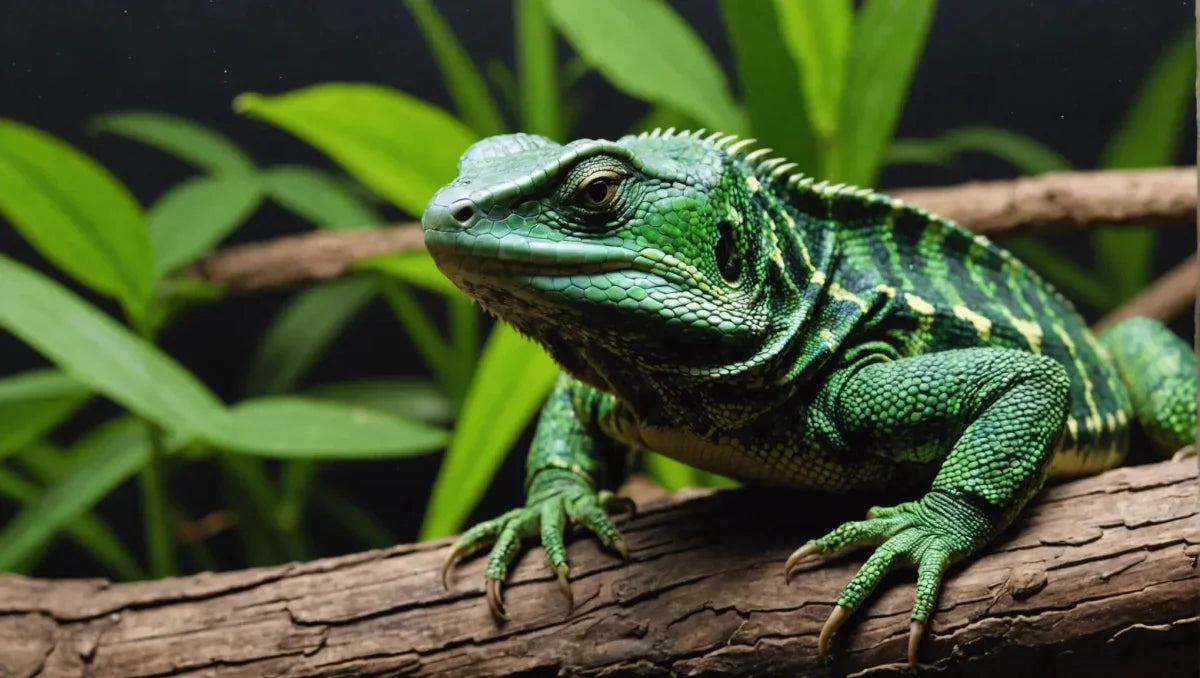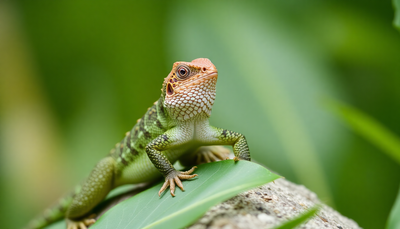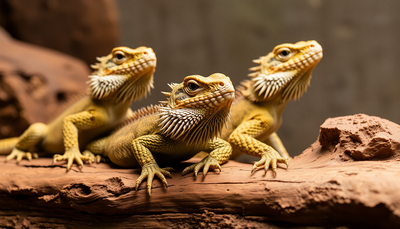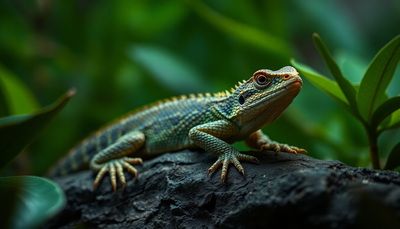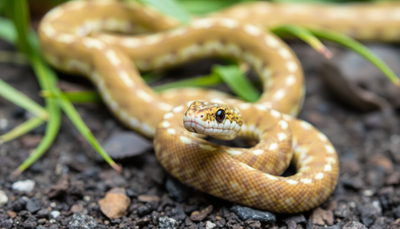Welcome to the ultimate guide on creating the perfect home for your beloved reptile species! Whether you're a seasoned reptile enthusiast or a beginner looking to provide the best habitat for your scaly friend, this comprehensive resource is tailored to meet all your reptile housing needs. From terrarium setup tips to temperature and humidity control, we will delve into the essential elements that make a reptile enclosure a comfortable and safe haven. By understanding the specific requirements of different reptile species, you can ensure that your pet thrives in its environment. Get ready to explore the fascinating world of reptile care and learn how to design a habitat that mirrors the natural conditions your reptile would encounter in the wild. Join us on this exciting journey as we uncover the secrets to creating a home that promotes the health, happiness, and well-being of your reptilian companion!

Understanding Your Reptile's Needs
When it comes to caring for a reptile as a pet, it is crucial to understand and meet their specific needs. Each reptile species has unique requirements that must be researched and catered to for their well-being. In this blog section, we will delve into the essential aspects of understanding your reptile's needs.
Research the Specific Requirements of Your Reptile Species
The first step in providing proper care for your reptile is to research and understand the specific requirements of their species. Different reptiles have varying needs when it comes to habitat, diet, temperature, and humidity. By knowing the specific needs of your reptile, you can create an environment that mimics their natural habitat and promotes their health and happiness.
Importance of Temperature, Humidity, Lighting, and Space
Temperature, humidity, lighting, and space are crucial factors that directly impact the well-being of your reptile. Reptiles are ectothermic, meaning they rely on external sources of heat to regulate their body temperature. Maintaining the correct temperature gradient in their enclosure is essential for their digestion, metabolism, and overall health. Similarly, proper humidity levels are vital for hydration, shedding, and respiratory health.
In addition to temperature and humidity, adequate lighting is essential for reptiles that require UVB light for synthesizing vitamin D3, which is crucial for calcium metabolism and preventing metabolic bone diseases. Providing the right amount and type of lighting is key to ensuring your reptile's overall health.
Lastly, sufficient space is necessary to allow your reptile to exhibit natural behaviors, move around freely, and have separate areas for basking, hiding, and exploring. A cramped or inadequate enclosure can lead to stress, behavioral issues, and health problems.
Creating an Enriching Environment
Beyond the basic needs of temperature, humidity, lighting, and space, it's essential to provide enrichment for your reptile. Enrichment includes items like branches for climbing, hiding spots, and even toys for mental stimulation. These additions not only keep your reptile physically active but also provide mental engagement, preventing boredom and promoting overall well-being.
Regular Health Check-ups and Monitoring
In addition to creating a suitable habitat, regular health check-ups are crucial for your reptile's well-being. Reptiles can hide signs of illness well, so monitoring their behavior, appetite, and physical appearance is important. Establishing a relationship with a reptile-savvy veterinarian can help ensure any health issues are addressed promptly.
Conclusion
By understanding and meeting your reptile's specific needs, providing enrichment, and ensuring regular health check-ups, you can create a nurturing environment that promotes a happy and healthy life for your scaly companion. Stay tuned for more tips on how to care for your reptile and deepen your bond with these fascinating creatures.
Choosing the Right Enclosure
When it comes to providing a suitable habitat for your reptile, selecting the right enclosure is crucial. The enclosure serves as the reptile's home, affecting its overall well-being and behavior. Here are some key points to consider when choosing the right enclosure:.
- Explore Different Types of Enclosures:
- Vivariums: Glass enclosures that provide good visibility but may require more maintenance due to humidity control.
- Terrariums: Enclosures made of plastic or glass, ideal for reptiles that require specific humidity levels.
- Wooden Enclosures: Provide insulation and a natural look, but may not be suitable for high-humidity species.
-
Screen Enclosures: Great for species that require ample airflow and lower humidity levels.
-
Size Matters:.
- Ensure the enclosure is spacious enough for your reptile to move around, stretch, and exhibit natural behaviors.
- Consider the adult size of your reptile species to provide adequate space for growth.
-
Create a multi-level habitat for arboreal species to encourage climbing and exploration.
-
Material Selection:.
- Opt for non-toxic materials like PVC, HDPE, or glass that are safe for your reptile and easy to clean.
- Avoid cedar, pine, or other woods that emit harmful fumes or retain moisture.
-
Consider acrylic enclosures for better insulation and visibility compared to glass.
-
Design Factors:.
- Ensure proper ventilation to prevent stagnant air and maintain optimal air quality.
- Provide a gradient of temperatures within the enclosure to allow for thermoregulation.
- Include UVB lighting for reptiles that require UV exposure for vitamin D synthesis.
-
Incorporate natural elements like live plants, branches, and rocks to create a more enriching environment.
-
Customization Options:.
- Consider custom-built enclosures for unique reptile species with specific habitat requirements.
- Explore DIY enclosure projects for a personalized touch and cost-effective solution.
By exploring the different types of enclosures available and considering factors such as size, material, design, and customization options, you can ensure that your reptile has a comfortable and safe living space that promotes its health and well-being. Remember, the enclosure is more than just a physical space; it's a key component in providing a thriving environment for your scaly companion.
Creating the Ideal Habitat
When setting up a habitat for your beloved pets, it is crucial to ensure that their living space mimics their natural environment as closely as possible. By creating an ideal habitat, you are not only promoting their well-being but also providing them with a safe and enriching space to thrive in. Let's delve into the key aspects of creating the perfect habitat for your pets.
- Suitable Substrate and Hiding Spots
One of the fundamental elements of a habitat is the substrate. Different species have varying substrate requirements, so it is essential to research and provide the most suitable option. Whether it's sand for desert-dwelling creatures or mulch for forest inhabitants, the right substrate is vital for maintaining proper humidity levels and allowing for natural behaviors like burrowing. Additionally, incorporating hiding spots such as caves or logs can help reduce stress by providing a secure retreat for your pets.
- Appropriate Decorations and Plants for Enrichment
Enrichment plays a significant role in keeping your pets mentally stimulated and physically active. Including decorations like branches, rocks, or artificial plants not only enhances the aesthetic appeal of the habitat but also provides opportunities for climbing, exploring, and foraging. Live plants can further enrich the environment by improving air quality and creating a more natural setting for your pets to thrive in.
- Proper Ventilation and Security Measures
Ventilation is key to maintaining a healthy habitat by ensuring proper air circulation and preventing the buildup of excess humidity or stagnant air. Depending on the species, you may need to provide additional heating or cooling elements to maintain optimal temperature levels. Furthermore, implementing security measures such as secure lids or locks can prevent escapes and safeguard your pets from potential hazards.
- Adequate Lighting and Temperature Regulation
Proper lighting is essential for regulating the circadian rhythms of your pets and supporting their overall health. Research the specific lighting requirements of your pet species and ensure they receive appropriate exposure to natural or artificial light sources. Temperature regulation is equally crucial, as maintaining the correct temperature gradient within the habitat is vital for your pets' thermoregulation and metabolic processes.
- Behavioral Enrichment and Interaction
In addition to physical enrichment, mental stimulation and social interaction are essential for your pets' well-being. Provide toys, puzzles, or interactive feeders to encourage natural behaviors and prevent boredom. Spending quality time interacting with your pets through play, training, or simply observing their behaviors can strengthen your bond and enhance their overall quality of life.
By focusing on these key aspects and tailoring the habitat to meet the specific needs of your pets, you can create an ideal living space that promotes their health, happiness, and overall well-being. Remember, a well-designed habitat not only benefits your pets but also enriches your experience as a pet owner.
Maintaining a Healthy Environment
Importance of Regular Cleaning and Maintenance
Maintaining a healthy environment goes beyond just appearances; it is crucial for overall well-being. Regular cleaning and maintenance play a vital role in ensuring that the surroundings are free from harmful pollutants and allergens. Dust, dirt, and other contaminants can accumulate over time, leading to poor indoor air quality. By incorporating a consistent cleaning schedule, not only is the space aesthetically pleasing, but it also promotes better health by reducing the presence of irritants that can trigger allergies and respiratory issues.
Significance of Monitoring Temperature and Humidity Levels
Monitoring temperature and humidity levels is a key aspect of maintaining a comfortable and healthy environment. Fluctuations in these levels can have various impacts, from affecting personal comfort to influencing the condition of furniture and electronics. High humidity levels can promote mold growth and cause condensation issues, while extreme temperatures can lead to discomfort and potential damage to belongings. By keeping a close watch on temperature and humidity, adjustments can be made to create an environment that is conducive to both health and the preservation of items within the space.
Common Issues and Troubleshooting Tips
Even with regular maintenance, certain common issues can still arise when striving to maintain a healthy environment. Problems such as poor ventilation, water leaks, and pest infestations can disrupt the equilibrium of a space. Addressing these issues promptly is essential to prevent further damage and maintain a safe living or working environment. Implementing troubleshooting tips like fixing leaks promptly, improving ventilation systems, and sealing entry points for pests can help mitigate these issues effectively.
Importance of Indoor Plants
In addition to regular cleaning and monitoring of environmental factors, incorporating indoor plants can further enhance the quality of the indoor environment. Plants not only add a touch of nature to the surroundings but also help in purifying the air by absorbing toxins and releasing oxygen. They can also contribute to regulating humidity levels, creating a more balanced and pleasant atmosphere.
Utilizing Air Purifiers and Humidifiers
For spaces that require additional assistance in maintaining air quality and humidity levels, the use of air purifiers and humidifiers can be beneficial. Air purifiers help in removing airborne particles and allergens, while humidifiers add moisture to the air, especially in dry climates. These devices can complement regular cleaning practices and monitoring efforts, ensuring a consistently healthy indoor environment.
Conclusion
Maintaining a healthy environment involves a combination of regular cleaning, monitoring of temperature and humidity levels, addressing common issues promptly, incorporating indoor plants, and utilizing air purifiers and humidifiers when necessary. By taking a proactive approach to environmental maintenance, individuals can create spaces that promote well-being, comfort, and longevity of belongings. Remember, a healthy environment is not just a luxury but a necessity for a quality lifestyle.
Creating the perfect home for your reptile species is essential for their well-being and happiness. The webpage for. Zilla Micro Reptile and Amphibian Habitats Arboreal On Talis US offers a diverse range of products tailored to meet the needs of reptile and amphibian enthusiasts. From habitats and ornaments to housing accessories and food options, this webpage provides everything you need to ensure your pets thrive in their environment.
For those looking to provide their reptiles with top-quality habitats and supplies, the Zilla Micro Reptile and Amphibian Habitats Arboreal webpage is a one-stop destination. With a wide selection of products designed for various reptile species, including turtles, lizards, frogs, and snakes, this webpage caters to the specific requirements of different pet owners.
To explore the full range of products and find the perfect home for your reptile companion, visit. Zilla Micro Reptile and Amphibian Habitats Arboreal . Give your reptile the home they deserve!.


